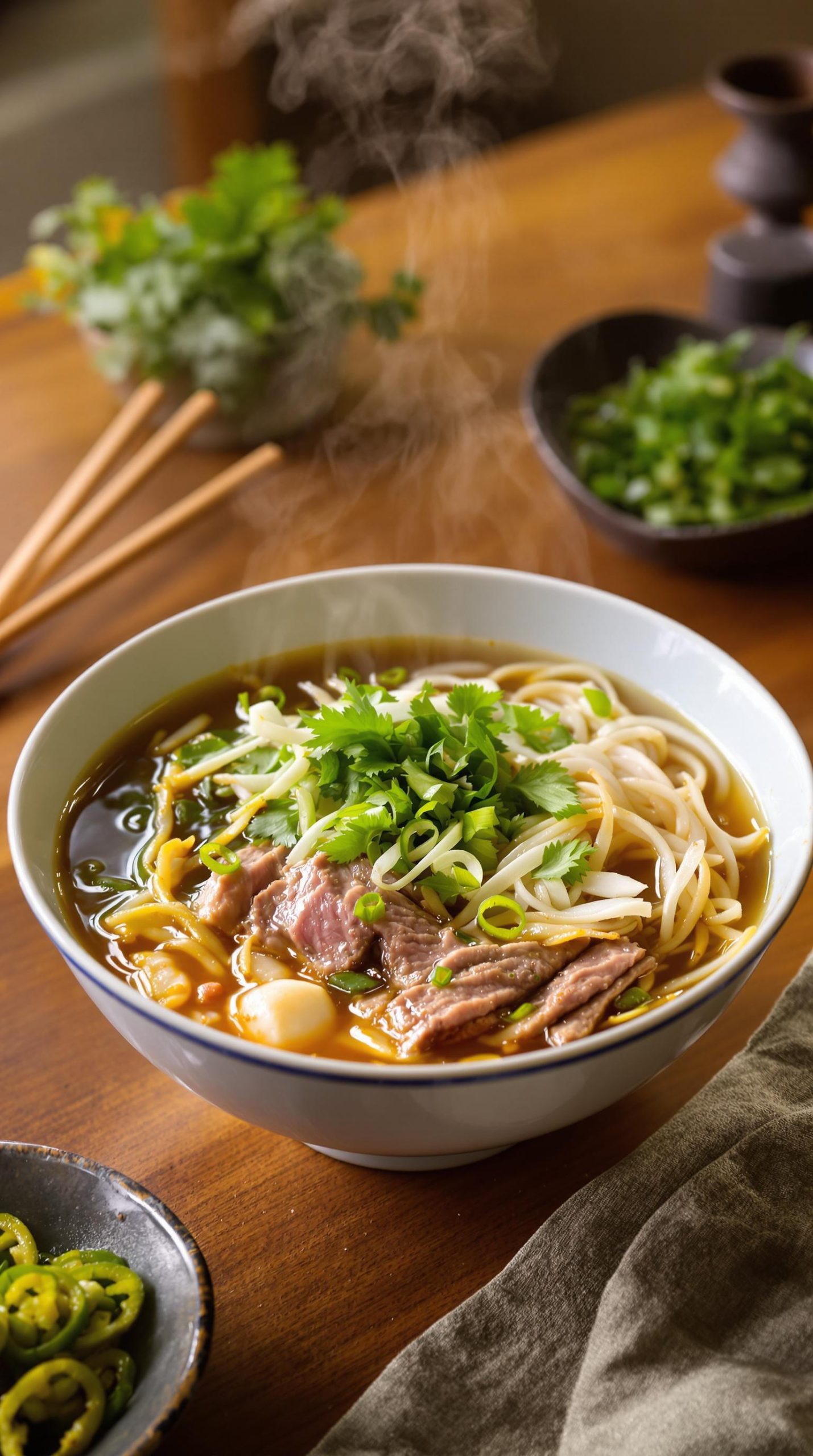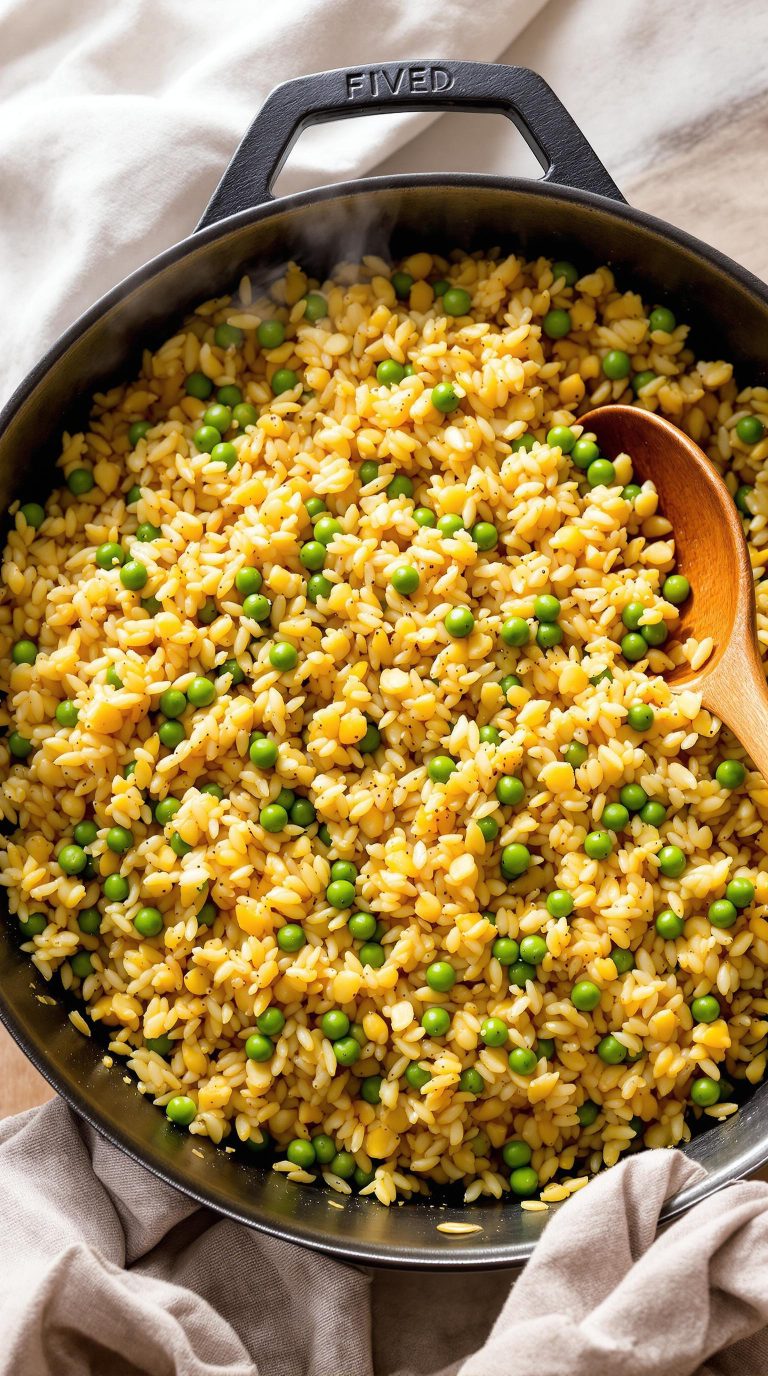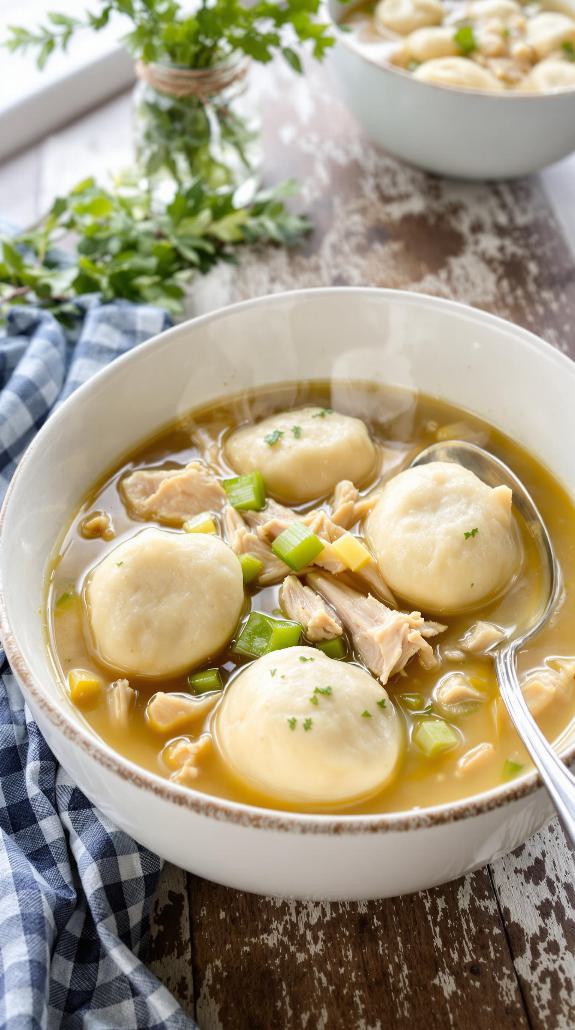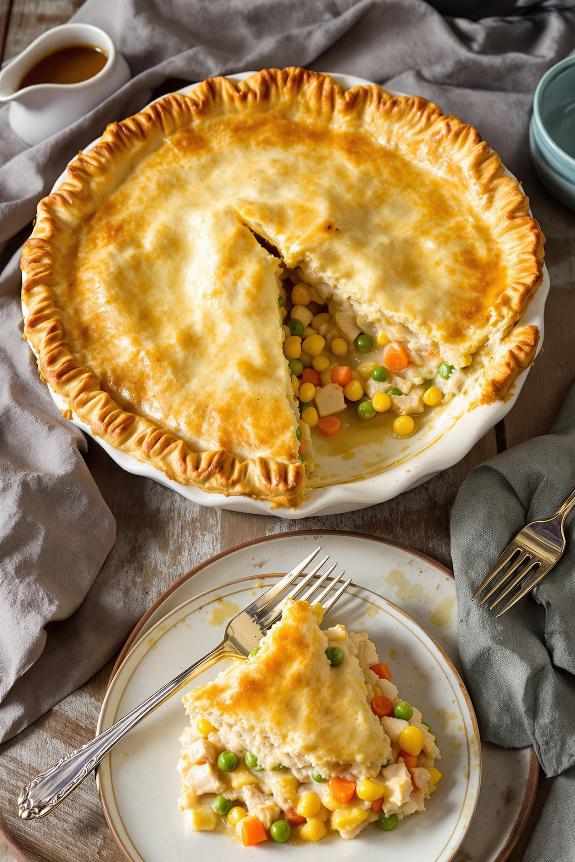Why You’ll Love this Authentic Vietnamese Pho
When you taste authentic Vietnamese pho, you’ll understand why this soul-satisfying soup has captivated food lovers worldwide.
I’m obsessed with the rich, aromatic broth that simmers for hours, extracting every bit of flavor from beef bones, star anise, cinnamon, and cardamom. Can you imagine anything more comforting?
The contrast of tender beef slices against chewy rice noodles creates the perfect textural balance.
What really seals the deal? Those fresh garnishes—cilantro, scallions, and serrano chilies—that brighten each spoonful.
It’s complex yet simple, time-consuming yet worth every minute. Trust me, this isn’t just soup, it’s culinary therapy in a bowl.
What Ingredients are in Authentic Vietnamese Pho?
Let me tell you, authentic Vietnamese pho requires quite a shopping list, but each ingredient plays an essential role in creating that magical flavor profile that makes this soup so addictive.
The foundation of any great pho is its broth—deep, aromatic, and complexly layered with spices and umami. I’m always amazed at how such simple ingredients transform into something so extraordinary through the slow cooking process. Ready to gather everything you’ll need for this culinary journey?
- 4 large unpeeled shallots
- 4-inch piece of unpeeled ginger
- 1 teaspoon fennel seed
- 5 star anise
- 1 cinnamon stick (3 inches)
- 1 black cardamom pod, crushed
- 5 pounds beef leg bones, cut into 3-inch pieces (grass-fed preferred)
- 1½ pounds boneless beef chuck, trimmed and cut into chunks
- ½ ounce dried scallops
- 2 tablespoons kosher salt, plus more to taste
- ¼ cup fish sauce
- 8 scallions (green parts thinly sliced, white parts left whole)
- 1½ tablespoons unseasoned rice vinegar
- 2 serrano chilies, stemmed and thinly sliced
- 2 pounds small flat rice noodles
- 8 ounces beef sirloin, cut across grain into ½-inch thick slices
- 1 medium yellow onion, thinly sliced and soaked in cold water
- ⅓ cup fresh cilantro leaves
- Fresh ground black pepper to taste
- 6 quarts cold water
When shopping for these ingredients, quality matters tremendously.
For the most authentic flavor, try to find star anise and black cardamom at an Asian grocery store—they’re noticeably more fragrant than what you might find at standard supermarkets.
And the beef bones? They’re non-negotiable for that rich, collagen-filled broth, though you might need to special-order them from your butcher.
Remember that fish sauce brands vary widely in saltiness and flavor profile, so you might need to adjust quantities based on your particular brand.
Don’t skip the dried scallops either; they add a subtle seafood undertone that’s characteristic of northern Vietnamese pho.
How to Make this Authentic Vietnamese Pho

Making authentic Vietnamese pho begins with developing that incredibly rich, aromatic broth—the soul of this beloved soup. First, place 4 large unpeeled shallots and a 4-inch piece of unpeeled ginger on a foil-lined baking sheet and broil them about 4 inches from the heat. Turn them occasionally until they’re beautifully blackened, about 15-20 minutes. This charring process creates those deep, caramelized flavors that define a proper pho broth.
While that’s happening, toast 1 teaspoon fennel seeds, 5 star anise, a 3-inch cinnamon stick, and 1 crushed cardamom pod in a dry skillet until they release their fragrance—about 3 minutes. The aroma that fills your kitchen during this step? Absolutely transportive.
Now comes the vital technique that separates good pho from great pho. Blanch your 5 pounds of beef bones in boiling water for just 3 minutes, then drain and rinse them thoroughly. This extra step removes impurities that would cloud your broth.
Return the clean bones to a fresh pot along with your charred aromatics, 1½ pounds of beef chuck, and 6 quarts of cold water. Bring it to a boil, reduce to a simmer, then add your toasted spices, ½ ounce dried scallops, and 2 tablespoons of kosher salt. Let this mixture simmer gently for about 1½ hours, regularly skimming any foam from the surface.
At this point, remove the tender beef chuck pieces, cool them in ice water, slice them thinly, and refrigerate for serving. The broth needs another 1½ hours of simmering to fully develop its flavors. When finished, strain it through cheesecloth, skim off any fat, and stir in ¼ cup of fish sauce and the white parts of 8 scallions.
The final assembly brings everything together in perfect harmony. Soak 2 pounds of rice noodles in boiling water until they’re just al dente, about 10 minutes, then rinse with cold water. Divide these noodles between serving bowls and top with your sliced, cooked beef chuck and thin slices of raw beef sirloin (about 8 ounces total). The raw beef will cook gently in the hot broth when served.
Crown each bowl with sliced yellow onions that have been soaked in cold water (to remove their harsh bite), thinly sliced scallion greens, and ⅓ cup fresh cilantro leaves. Having a proper cookware set specifically designed for breakfast tacos can also be handy when preparing garnishes for pho, as both cuisines require similar chopping and prep techniques. Finish with freshly ground black pepper, then ladle the steaming hot broth over everything, making sure to place one white scallion piece in each bowl. For a truly efficient cooking experience, a premium stand mixer can help prepare all your garnishes quickly while your broth simmers. Serve with a side of sliced serrano chilies mixed with 1½ tablespoons of rice vinegar so each diner can adjust their preferred level of heat.
What results is a bowl of pure comfort that’s somehow both delicate and robust, subtle yet complex.
Authentic Vietnamese Pho Substitutions and Variations
While traditional Vietnamese pho follows time-honored techniques, there are several practical substitutions you can make without compromising authenticity.
Can’t find black cardamom? Regular green cardamom works in a pinch, though you’ll miss that smoky depth. No dried scallops? Try a tablespoon of fish sauce instead.
For variations, I love offering a “build-your-own” pho bar with extra herbs like Thai basil or culantro.
Northern-style pho (like this recipe) is more subtle, but you can brighten it up with lime wedges and bean sprouts for a Southern twist.
Vegetarians? Replace beef with mushrooms and use vegetable broth with extra spices.
What to Serve with Authentic Vietnamese Pho
What accompanies a steaming bowl of authentic Vietnamese pho can elevate your dining experience from satisfying to spectacular.
I always arrange fresh bean sprouts, Thai basil leaves, lime wedges, and jalapeño slices on a side plate, letting everyone customize their bowl. A small dish of hoisin and sriracha sauces completes the spread.
For a fuller meal, I’ll add crispy spring rolls or fresh summer rolls with peanut dipping sauce. Can’t forget the essential Vietnamese iced coffee with condensed milk to balance the savory broth.
Trust me, these accompaniments aren’t optional, they’re part of the ritual.
Final Thoughts
The journey of creating authentic pho reaches far beyond just following a recipe. It’s an experience that connects us to Vietnamese culture, tradition, and the art of patient cooking.
I’m always amazed at how a simple combination of aromatic spices, tender beef, and delicate noodles can create something so profoundly satisfying.
Similar to Vietnamese pho, proper browning techniques are essential when developing deep flavors in many classic dishes around the world.
Just as French toast requires golden brown frying to achieve its perfect texture and flavor, pho demands careful attention to each cooking stage.
When you take that first spoonful of your homemade pho, letting the complex broth warm you from the inside out, there’s really nothing quite like it. Worth every minute of preparation, don’t you think?




